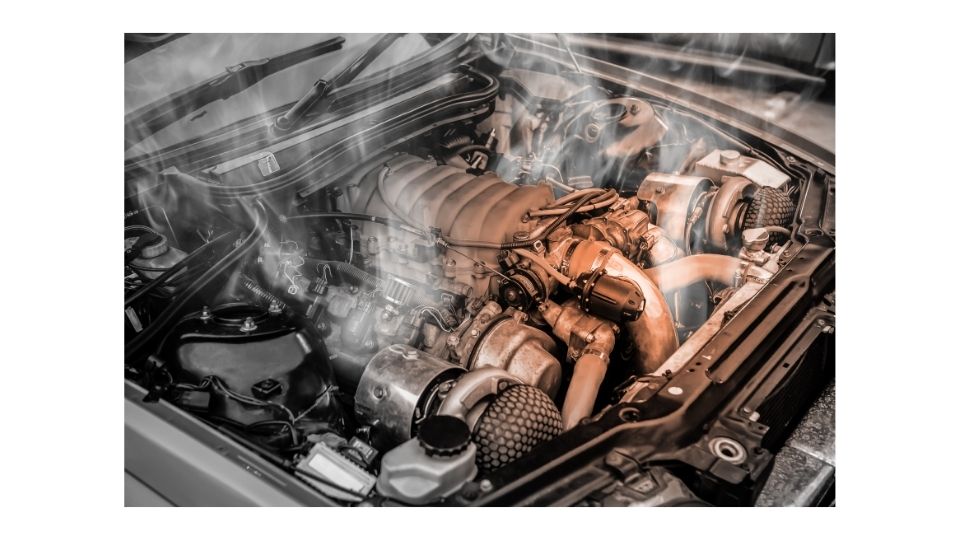Without a doubt, driving an overheated car is a risky agenda. So, what causes a car engine to overheat? One of the common causes is a faulty air conditioner. Therefore, turning the conditioner off would reduce the load on the engine.
Also, any damage to the engine coolant results in overheating. The inner combustion engine generates a lot of heat while running and if not controlled by the coolant system, it may lead to engine overheating and eventually being damaged. Therefore, proper cooling of the engine is as important as proper engine lubrication.
Can You Drive an Overheated Car?
It is common knowledge to most drivers that whenever your car overheats and you decide to keep driving, the cylinder heads will start to warp. When this happens, it can lead to a blown head gasket, which would require a long and expensive repair.
This also conflicts with the combustion process since the heads do not perform so well when they are warped. There is no actual way of driving an overheated car.
But there is no difficult situation without a way around it. If you are on the road, for a long trip and your car is overheating with no repair shop insight, here is how you can go on with your journey without having to worry about blowing up your engine or a long delay on your trip:
- Park your car by the side of the road
- Turn off your engine
- Remove your car’s grill mesh, a bit too drastic, yes, but it is totally worth it. Now get back into your car and continue with your journey. Removing the grill mesh allows for air to get directly into your engine. So, your car is constantly being fanned, hence will cool throughout the remaining part of your journey.
- A less drastic way around it would be: Parking your car on the side of the road Popping the hood And allowing your engine to cool for approximately 30 minutes before getting back on the road.
But if you are on a highway and cannot get off the road to the park, turning on the heater and turning off the air conditioner might help do the trick. Different types of cars have different levels of overheating.
The time it takes a saloon car to overheat to the point of damage is not the same as that of a pickup. Some cars can go for up to 20 miles while overheating, with no damage to any of their parts, while others can only do 10 miles!
But some get damages in the engine bay as soon as they get “too hot”, or the car might even turn itself off. Therefore, it is safe to say, there is no certain mileage an engine can reach while overheating without any damages/ fatality to it or other parts of the car.
Avoid driving on an overheating engine. If you have to drive an overheated car, only drive it after the engine cools down. As a precaution, you should always keep your eye on the temperature gauge to avoid other major problems.
Constantly ensure to check for damages on your air condition or coolant. And, always try to take your car for a general maintenance check as often as possible to avoid any other car problems. Ensuring that your car parts are well lubricated is also a very important factor.
How To Prevent Overheating
But before we show you how to deal with this problem, how can you prevent it?
- Always, park your car in a shade.
- Use car window shades.
- Tint your windows.
- Leave your car windows slightly open.
- Turn the floor air vents on.
- Use the fresh air setting instead of recirculation on your A/C.
- Keep your eye on the car temperature gauge while driving.
- Turning on the heater may also reduce overheating, since it redirects the heat away from the engine bay and unto the passenger area.
Conclusion
The amount of time and money that will go into fixing the damages caused by an overheated engine is a lot, so, if not for the expense of fixing your car and saving yourself from unnecessary time loss, then, avoid doing it for your safety and the safety of your loved ones and other road users! If it’s too hot, park it! If it’s too hot, do not drive it!

Robert Anderson is a world class motorhead who rebuilt his first carb at age 10, his first engine at age 15, and completed his first full hotrod build when he was just 18! Previously, he has ran a part warehouse, delivered pizzas, and managed the service department for a $20 million/year revenue dealership. Robert knows cars like few others and he is passionate about sharing his knowledge.

